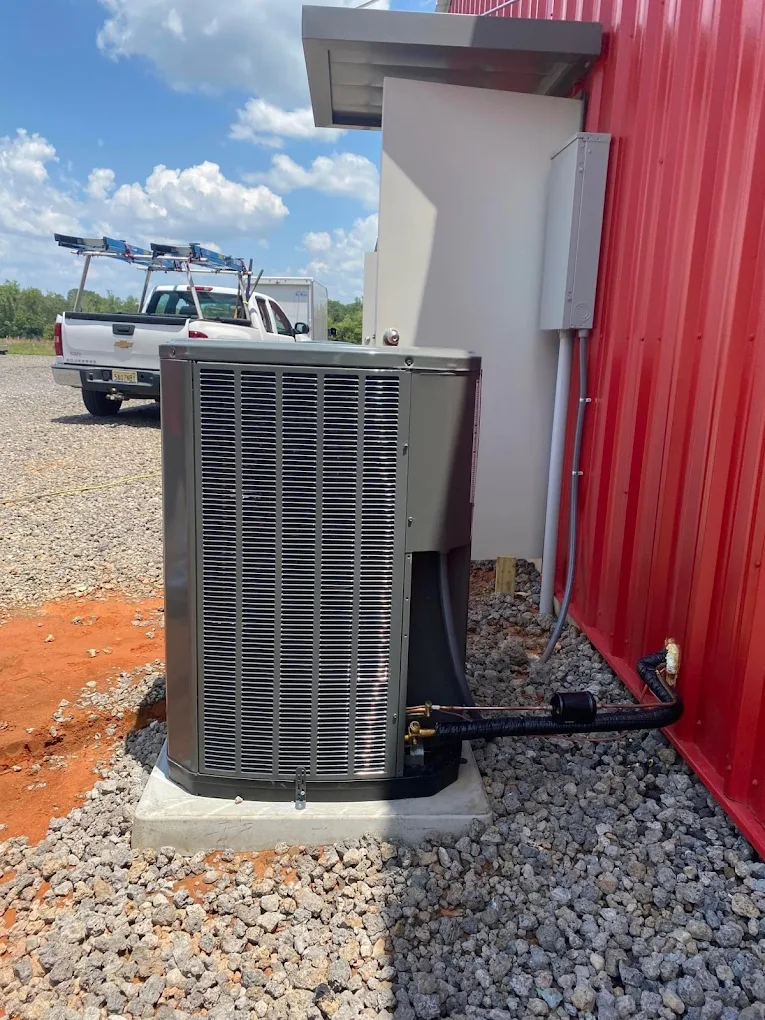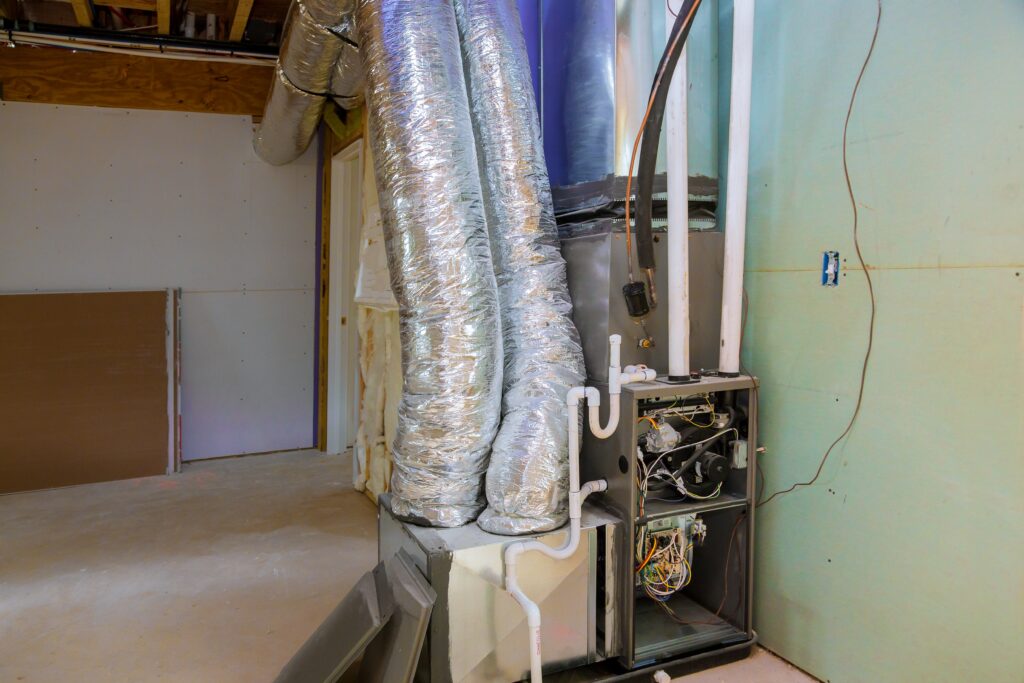How Ceiling Fans and Your HVAC System Work Together
In nearly every home in Gulf Shores, you will find two key components working to keep families comfortable: a powerful central air conditioning system and a series of ceiling fans. During the peak of our long, hot, and humid summers, it is a common sight to see both of these appliances running at the same time. Many homeowners do this out of habit, instinctively knowing that the combination feels more comfortable than either one running alone. What is often not fully understood, however, is the science behind why this is such an effective strategy.
Your ceiling fans and your HVAC system are not redundant forces competing with each other; they are a powerful team designed to work in perfect harmony. When used correctly, this partnership can dramatically improve the comfort of your home while significantly lowering your monthly energy bills. A common misconception is that these two systems perform the same job, but they actually play very different and complementary roles. At Wynn Creek AC, we believe that understanding how to leverage this partnership is one of the most effective and affordable ways for homeowners to take control of their home’s climate. This guide will explain the principles behind this synergy and provide you with practical, actionable steps to save money in every season.
How a Ceiling Fan Really Works
To understand how a ceiling fan can help your HVAC system, it is crucial to first understand what a fan does and, just as importantly, what it does not do. The single most important thing to know is that a ceiling fan does not actually lower the temperature of the air in a room. It does not produce any cold air, and it has no effect on the reading of your thermostat. Its cooling effect is entirely personal and is based on a simple but powerful principle known as the wind chill effect.
Your body’s primary natural cooling mechanism is the evaporation of perspiration from your skin. As this moisture evaporates, it carries heat away from your body, which is what makes you feel cooler. A ceiling fan dramatically accelerates this process. By creating a consistent breeze, the fan moves air across your skin, which speeds up the rate of evaporation. This is why a gentle breeze on a hot day can feel so refreshing and why you feel a distinct chill when you step out of a swimming pool into the wind.
The fan is making you feel cooler, not the room itself. This is a critical distinction. Because the fan’s cooling effect is dependent on its breeze being felt on your skin, it provides absolutely no benefit in an empty room. Running a ceiling fan in an unoccupied space does not pre-cool the room or make your air conditioner’s job easier. In fact, the electric motor of the fan is actually adding a very small amount of heat to the room. For this reason, one of the most important energy-saving habits a homeowner can adopt is to always turn off their ceiling fans when they leave a room.
A Powerful Partnership for Cooling
The true power of the fan and HVAC partnership is realized during our long, hot, and humid cooling season. Because the wind chill effect from your ceiling fan can make you feel significantly cooler, you can comfortably raise the temperature setting on your thermostat without any noticeable sacrifice in your personal comfort. On average, a properly functioning ceiling fan can make a room feel up to four degrees cooler than the actual air temperature.
This is where the major financial savings come into play. A widely accepted guideline in the HVAC industry is that for every single degree you raise your thermostat during the summer, you can save approximately three percent on your cooling costs. By using your ceiling fans to their full potential, you could raise your thermostat from a chilly 74 degrees to a much more energy-efficient 78 degrees and feel just as cool and comfortable. This four-degree adjustment could result in a reduction of twelve percent or more on the cooling portion of your monthly electricity bill, which is a substantial savings over the course of a long Gulf Shores summer.
To achieve this effect, it is absolutely essential that your ceiling fans are rotating in the correct direction for summer. During the cooling season, your fan’s blades should be set to spin in a counter-clockwise direction. You can easily check this by standing directly underneath the fan and looking up; the blades should be moving from your right to your left. This rotation pushes the air straight down into the room, creating the direct and powerful breeze that is necessary to produce the wind chill effect.
An Unexpected Ally for Heating
While most people associate ceiling fans with summer cooling, they can also be a surprisingly effective tool for improving your comfort and saving you money during the heating season. The strategy for winter, however, is completely different and is based on another simple principle of physics: hot air rises.
When you are running your furnace or heat pump, the warm air it produces is pushed out of your vents and naturally rises towards the ceiling. In a room with standard or vaulted ceilings, a significant layer of the warmest air in the room can become trapped up high, where it provides no benefit to the people in the living space below. This often leads homeowners to turn up the thermostat in an attempt to feel warmer, which wastes a significant amount of energy.
A ceiling fan can be used to solve this problem by gently recirculating that trapped warm air. To do this, you must reverse the rotation of your fan’s blades so that they are spinning in a clockwise direction. On most fans, this is done with a small toggle switch on the motor housing. The fan should also be set to its lowest possible speed. This clockwise rotation will pull the cooler air from the floor level up towards the ceiling. This action gently displaces the trapped layer of warm air and pushes it down along the walls and back into the living space, without creating a noticeable, drafty breeze. By effectively mixing the air in the room, this process can make you feel warmer, allowing you to lower your thermostat setting by a degree or two, which can lead to real savings on your winter heating bills.
A Well-Maintained HVAC System
This powerful partnership between your ceiling fans and your thermostat is only truly effective if the foundation of your home’s comfort, your HVAC system itself, is operating at its peak performance. The strategy of raising your thermostat setting in the summer, for example, relies on the assumption that your air conditioner is capable of efficiently and effectively reaching and maintaining that temperature.
If your HVAC system is struggling with a clogged air filter, dirty coils, or an incorrect refrigerant charge, it will not be able to perform its job efficiently. A neglected system will have to run for much longer periods to produce the same amount of cooling, which will negate the energy savings you are trying to create with your smart thermostat and fan usage. A dirty indoor coil will also be far less effective at removing the high levels of humidity we experience in Gulf Shores, which is a critical component of your overall comfort.
A professional, seasonal tune-up from Wynn Creek AC is the essential first step in creating a truly efficient home. Our certified technicians will perform a comprehensive inspection and cleaning of your entire system, ensuring that every component is operating as the manufacturer intended. A clean, well-maintained HVAC system is the foundation upon which all other energy-saving strategies are built.
Ready to schedule your air conditioning maintenance? Click to learn more!
Your ceiling fans are more than just decorative fixtures; they are powerful and versatile tools that can help you achieve a higher level of comfort while significantly lowering your year-round energy bills. By understanding the simple science behind their operation and by committing to using them strategically, you can create a powerful partnership with your HVAC system. In the summer, a counter-clockwise rotation allows you to raise your thermostat and save on cooling costs. In the winter, a slow, clockwise rotation can help you feel warmer and save on your heating bills.
This intelligent use of your home’s existing equipment is one of the most effective and affordable ways for homeowners in Gulf Shores to take control of their comfort and their budget. To ensure that your HVAC system is ready to be an effective partner in this strategy, we encourage you to be proactive about its care. Contact the trusted local experts at Wynn Creek AC to schedule your professional maintenance visit today, and let us help you unlock the full potential of your home comfort system.





